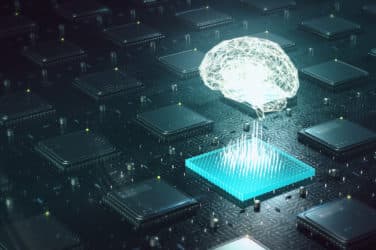“No one stepping into a driverless car or even learning how to drive in this decade will recognize how people traded in 2017.”
By David Aferiat, Co-Founder and Managing Partner, Trade Ideas LLC

David Aferiat, Trade Ideas
Recent equity trading investment and trading trends are anomalous. These are set against a backdrop of: structural changes in markets and investing styles; the rise of newer technologies such as Cloud, Blockchain, and AI; regulation; and the effect of massive data computation (“Big Data”) and the attendant information tsunami. The present is characterized by passive investment – a reaction to the vast amount of noise vs signals – that has minimized the role of active strategy and style. The underlying backdrop may affect markets and trading significantly, and eventually shift the pendulum from passive strategies back to a mix of active and passive using technology that generates actionable insight previously lost in the noise. For the smaller money manager, this will be very good news indeed, as they and their end clients gain access to capture alpha rather than index performance.
The Structural Situation
How the markets have changed. As little as five years ago, the fear was that a new market maker mechanism, HFTs, had entered the market. Momentum and Ph.D. driven, these traders sought advantage from the price asymmetries and rapid entry and exit into the market. The concern was not for the value of any particular equity, but the price information and movement that algos indicated were ripe for return on trading as measured by milliseconds and enabled by ever faster processing speeds.
As a result, institutional money was skittish. Longer term strategies could easily be identified and picked off in the HFT model. Interestingly, the backlash seems to be that passive investment strategies are on the rise, and active strategies of all types are waning. This leads to interesting speculation as to how active portfolios and the traders who seek to find liquidity for these portfolios (or even what stocks are valuable for such portfolios) are to be identified. And once identified, how these stocks are to be traded intraday. The emergence of AI and machine learning is an important solution to this challenge.
As part of passive strategies, the VIX is flat. This low volatility further reinforces passive approaches. Combined with this VIX development, ETF investment continues to grow massively.
Finally, in January 2018 a new era-defining change arrives: institutions in Europe will begin to pay for research as unbundled from commission costs, which, while not followed by US regulators, will certainly have a spillover into the commercial operations of US institutions, banks, and broker dealers.
Ironically, passive investing is content with averages and the index – the new normal for performance. Active traders, in contrast, continue to focus on the traditional definition of performance: Securing alpha and best execution on behalf of investors. If investor intent is the index, then money managers are secure. However, if investors demand alpha performance, then managers have a fiduciary obligation to move up and out from the index. Fortunately AI tools,previously unavailable from both technology and ‘walled-garden’ standpoints, help them do just that.
Technologies, Business models, and the movement to more efficient and intelligent trading
Underlying consistent effectiveness in trading has always been information advantage. These advantages are frequently eked out by technologies. And in the current environment, parallel to the passive developments, are technologies that weren’t even envisioned a decade ago.
Cloud technologies are increasing adopted as a necessity for the markets. The sheer volume of data, analysis and transactions are so massive (and increasing exponentially) that only the Cloud can sustain the volume. This in turn affects the architecture of the underlying data.
While the jury remains out on Blockchain (less so cryptocurrencies) clearly there are advantages in distributed ledger and other applications that firms across the board (not solely financial services) are likely to look at initiatives both internally and externally to reduce costs and gain efficiency in accuracy, speed and productivity.
Finally, there is the birth and adoption of AI. Firms can now crunch massive structured and unstructured data sets (social media, news, events, crowd sourced), run these against “what if” scenarios and develop predictive analytic strategies, that more often than not substantially exceed index returns. Delivered in a SaaS based model, information advantages to achieve consistent effectiveness in trading can from anywhere and not just the most highly capitalized, resource-rich hedge funds. Size and scale which were signs of strength at these funds, in fact, may be their albatross if technology adaptability and agility are lacking in the culture.
Active Investment Strategies and Artificial Intelligence
It is unlikely that following the passive trend, investment will simply return to status quo ante. Markets and traders evolve, and part of active strategies moving forward will likely involve some sort of AI. This information advantage is no different from previous behavior of investors and traders, who have always used the most advanced tools available to inform their strategies. And, since these technologies catalogue the decision to trade, they may be particularly helpful in identifying the facts and circumstances of any particular trade for regulatory purposes.
Importantly, AI does not eliminate the human decision process. It takes traders to the trade, it doesn’t make the trade.
The Return of Active Trading
Smaller traditional and alternative money managers are “holding the fort” for active investing. They now have the ability to take advantage of advanced analytics in active strategies – even more powerful than Ph.Ds. – as they continue to focus on alpha, not index. Their challenges for strategy and access to liquidity will in part be addressed by AI technology.
Technology never goes backwards. The breakthrough technologies across the economy in biotech, solar energy, and automobiles do not show signs of reversing. Advances in trading the capital markets follow the same trend and will make the previous tools and methods for arriving at trade decisions unrecognizable.
What else will the next generation do in their driverless cars but speculate in the markets?





